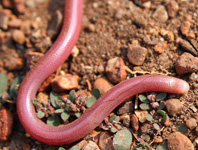Abstract
A new species Oligonychus neocastaneae sp. nov. is described and illustrated from Castanea crenata Sieb. et Zucc. (Fagaceae). The new species closely resembles Oligonychus castaneae Ehara & Gotoh, 2007, which inhabits the same host plant, Castanea crenata, but mainly differs by the aedeagus in having a longer distal portion which forms a small sigmoid and acuminate tip, instead of having a shorter distal portion which ends in a truncate tip. Several differences were also observed between the two species in the leg setal counts of tarsus II in the male and female; the number of tactile setae and solenidia (in parentheses) was 11(1) for the female and male in the new species, but in O. castaneae this count is 12(1) for the female and 12(2) for the male. A maximum likelihood tree based on the cytochrome c oxidase subunit I (COI) gene of mitochondrial DNA (mtDNA) showed that O. neocastaneae sp. nov. was clearly separated from O. castaneae and other related species. A key to all species of the genus Oligonychus known in Japan is given.
References
Beard, J.J. (2008) A new species of spider mite, Oligonychus palus sp. nov. (Prostigmata: Tetranychidae), from tropical Australia. Australian Journal of Entomology, 47, 102–106.
https://doi.org/10.1111/j.1440-6055.2008.00635.xBerlese, A. (1886) Acari dannosi alle piante coltivate. Premiata tipografia editrice F. Sacchetto, Padova, 31 pp.
Berlese, A. (1913) Acari nuovi. Redia, 9, 77–111.
Donnadieu, A.L. (1875) Recherches pour server à l’histoire des Tétranyques. Annales de la Société Linnéenne de Lyon, New Series, 22, 29–136.
Ehara, S. (1959) Description of a new spider mite attacking Japanese pines. Annotationes Zoologicae Japonenses, 32, 97–100.
Ehara, S. (1999) Revision of the spider mite family Tetranychidae of Japan (Acari, Prostigmata). Species Diversity, 4, 63–141.
Ehara, S. & Gotoh, T. (2007) Two new species of Oligonychus closely related to O. gotohi Ehara (Acari: Tetranychidae). International Journal of Acarology, 33, 15–20.
https://doi.org/10.1080/01647950708684495Ehara, S. & Gotoh, T. (Eds.) (2009) Colored Guide to the Plant Mites of Japan. Zenkoku Nôson Kyôiku Kyôkai, Tokyo, 349 pp. [in Japanese]
Gotoh, T., Araki, R., Boubou, A., Migeon, A., Ferragut, F. & Navajas, M. (2009) Evidence of co-specificity between Tetranychus evansi and Tetranychus takafujii (Acari: Prostigmata, Tetranychidae): comments on taxonomic and agricultural aspects. International Journal of Acarology, 35, 485–501.
https://doi.org/10.1080/01647950903431156Kumar, S., Stecher, G. & Tamura, K. (2016) MEGA7: Molecular Evolutionary Genetics Analysis Version 7.0 for Bigger Datasets. Molecular Biology and Evolution, 33, 1870–1874.
https://doi.org/10.1093/molbev/msw054Lindquist, E.E. (1985) Chapter 1.1 Anatomy, phylogeny and systematics. 1.1.1 External anatomy. In: Helle, W. & Sabelis, M.W. (Eds.), Spider Mites. Their Biology, Natural Enemies and Control. Vol. 1A. Elsevier, Amsterdam, pp. 3–28.
Matsuda, T., Hinomoto, N., Singh, R.N. & Gotoh, T. (2012) Molecular-based identification and phylogeny of Oligonychus species (Acari: Tetranychidae). Journal of Economic Entomology, 105, 1043–1050.
https://doi.org/10.1603/EC11404Meyer, M.K.P.S. (1974) A revision of the Tetranychidae of Africa (Acari) with a key to the genera of the world. Entomology Memoir, Department of Agricultural Technical Services, Republic of South Africa, 36, 1–291.
Migeon, A. & Dorkeld, F. (2006–2017) Spider Mites Web: a comprehensive database for the Tetranychidae. Available from: http://www.montpellier.inra.fr/CBGP/spmweb (accessed 9 January 2018)
Mitrofanov, V.I. (1977) The taxonomy of the family Tetranychidae (Acariformes, Trombidiformes). Zoologicheskii Zhurnal, 56, 1797–1804.
Nietner, J. (1861) Observations on the enemies of the coffee tree in Ceylon. The Ceylon Times Office, Ceylon, 31 pp.
Pritchard, A.E. & Baker, E.W. (1955) A revision of the spider mite family Tetranychidae. Memoir Series 2. Pacific Coast Entomological Society, San Francisco, 472 pp.
Reck, G.F. (1950) Spider mite fauna from Georgia (Tetranychidae: Acarina). Publishing House of the Academy of Science of Georgia, 9, 117–134. [in Russian]
Simon, C., Frati, F., Backenbach, A., Crespi, B., Liu, H. & Flook, P. (1994) Evolution, weighting and phylogenetic utility of mitochondrial gene sequences and a compilation of conserved polymerase chain reaction primers. Annals of the Entomological Society of America, 87, 651–701.
https://doi.org/10.1093/aesa/87.6.651Targioni Tozzetti, A. (1878) Relazione interno ai lavori della Stazione di entomologia agrarian di Firenze per I’ anno 1876. Acaridei. Annali dell’ Agricoltura, 1, 242–275.
Tuttle, D.M. & Baker, E.W. (1968) Spider Mites of Southwestern United States and a Revision of the Family Tetranychidae. The University of Arizona Press, Tucson, 143 pp.
Wainstein, B.A. (1960) Tetranychoid mites of Kazakhstan. Vol. 5. Publishing House of the Academy of Science of Kazakhstan, Alma-Ata, 276 pp. [in Russian]

